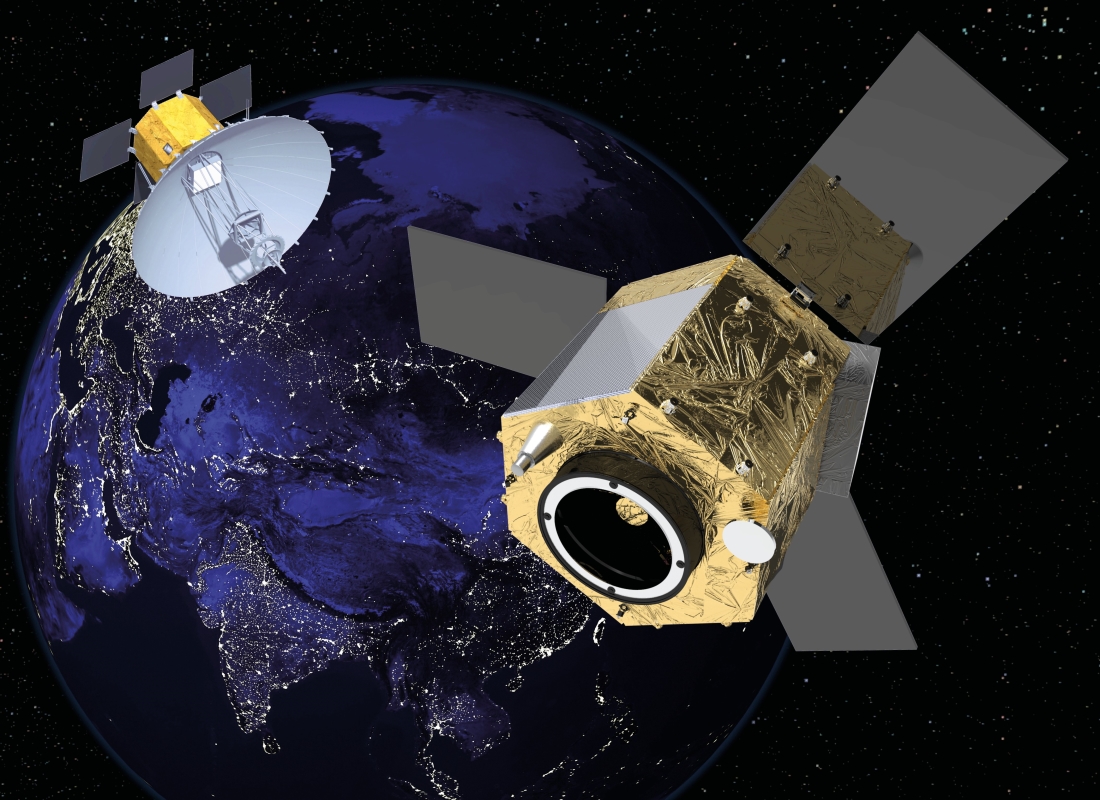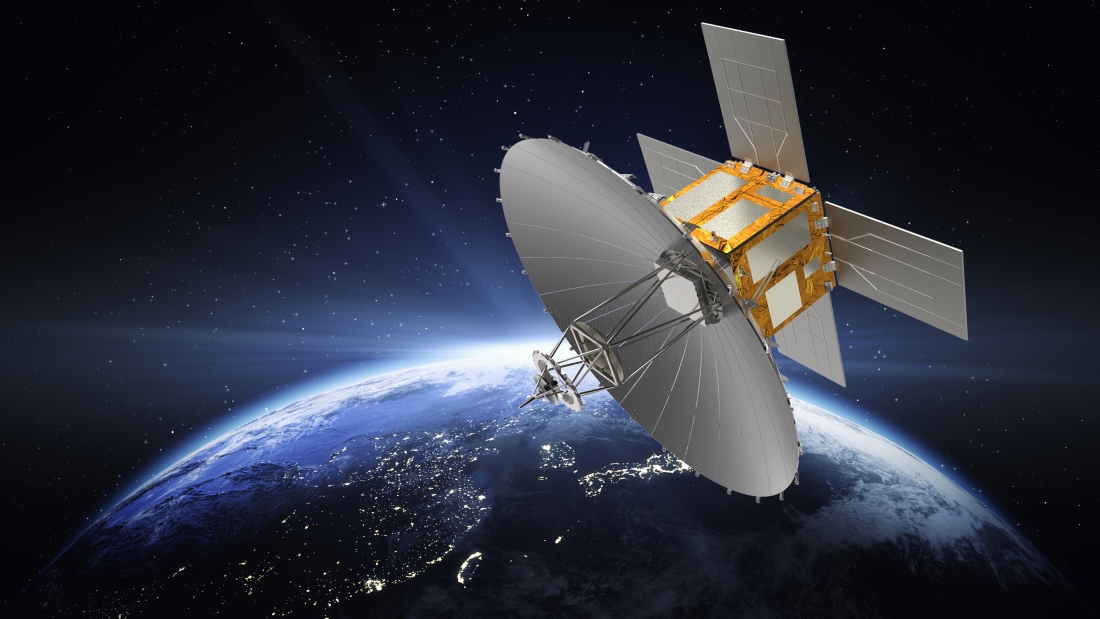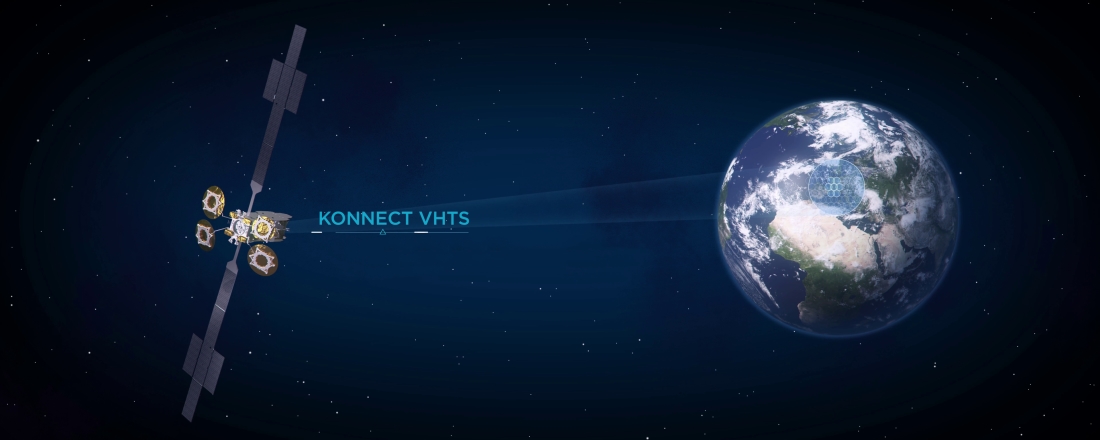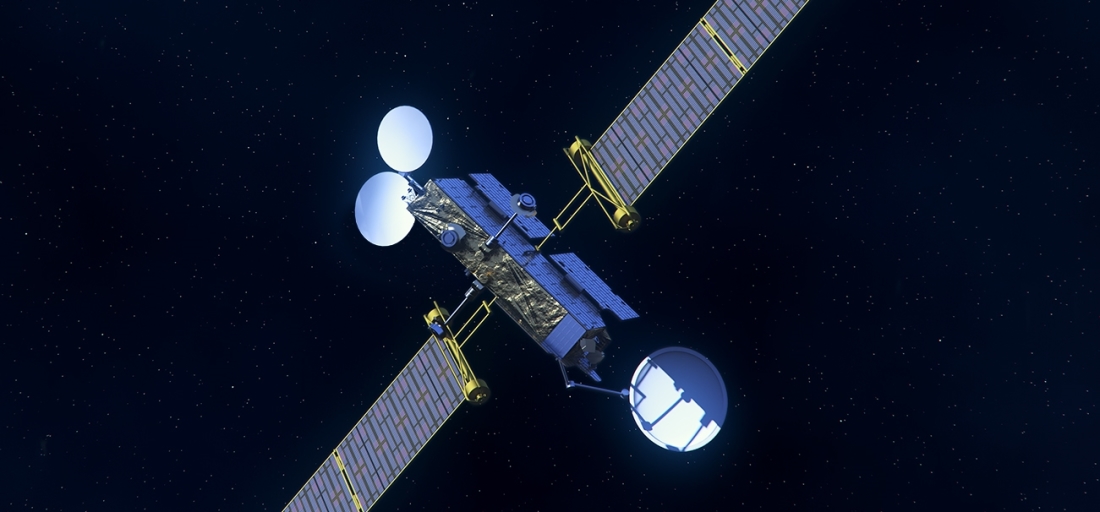Thales Alenia Space @ the 2019 Dubai Airshow
Thales Alenia Space will be at the Dubai Airshow from November 17 to 21, along with parent company Thales. The organizers of this strategic Middle East event expect nearly 87,000 visitors, 1,300 exhibitors and 165 aircraft in the static display at the Al Maktoum International Airport in Dubai.
The United Arab Emirates has long confirmed their position as a regional space power. On September 25, 2019, Hazza Al-Mansouri made history as the first UAE citizen to voyage in space on the International Space Station (ISS). In July 2020, the Hope space probe will be the very first mission by the Emirates to explore Mars. It is slated to arrive at the Red Planet in 2021, as will the Mars 2020 mission by NASA and ExoMars 2020, a joint mission between ESA and Russian space agency Roscosmos, with Thales Alenia Space as the industrial prime contractor. Furthermore, Dubai will be hosting the next universal exposition, “Dubai 2020”, under the auspices of the Middle East, Africa and South Asia region (MEASA). This major exposition will run from October 20, 2020 to April 10, 2021, and will take place concurrently with the celebrations marking the United Arab Emirates’ 50th anniversary, since it was founded in 1971.
Thales Alenia Space will be showcasing its latest technologies for high-performance optical and radar observation systems at the Dubai Airshow, along with its expertise in civil and military telecommunications solutions.
A complete range of optical and radar observation systems

Intelligence, maritime surveillance, mapping, crisis management… For these and many other critical applications, spaceborne systems give users, especially national governments, access to a wide range of monitoring capabilities to guarantee their security and independence. A number of countries have already shown a keen interest in acquiring space systems capable of independently providing high-precision images for intelligence. Capitalizing on over 30 years of experience in this field, Thales Alenia Space, the only European manufacturer with proven expertise in both optical and radar very-high-resolution instruments, offers a complete range of observation systems that meet market expectations.

Thales Alenia Space won two major contracts from South Korea in 2018, following highly-competitive international bidding, from KAI (Korean Aerospace Industries) and HSC (Hanwha Systems Corporation). It will build four Earth observation satellites equipped with synthetic aperture radars (SAR) as part of the SmallSat Korea "425" project. This constellation will be employed by the Korean government for applications including surveillance, intelligence and monitoring specific zones of interest.
Space to secure & defend
Thales Alenia Space will be spotlighting its expertise in military satellite communications systems (milsatcom) at the Dubai Airshow, especially the new Syracuse IV system built for French defense procurement agency DGA. The system comprises two satellites to be used by French armed forces, replacing the previous generation Syracuse 3A and Syracuse 3B satellites, launched in 2005 and 2006, respectively. Syracuse IV will enter service as from 2021. The DGA chose the team of Thales Alenia Space (65%) and Airbus (35%) to build the satellites, with Thales Alenia Space as lead contractor.
Thales Alenia Space’s role in bridging the digital divide

Because we want to be connected anywhere, at any time… because we want to benefit from increasingly enriched content at any given moment… because no region, especially isolated areas, should be left behind in efforts to bridge the digital divide… because space can deliver solutions that improve people’s daily lives… Spaceborne communications systems, especially digital versions, are undoubtedly the solution that best addresses the needs of the fiercely competitive and fast-changing telecom market. Furthermore, we are seeing the advent of new market segments, especially for aeronautical and maritime communications, with accelerating connectivity requirements. Thales Alenia Space is spearheading the move to digital very-high throughput satellites (VHTS), a solution that combines high capacity, agility and competitiveness. Thales Alenia Space’s VHTS solution is very flexible, allowing it to adapt at any given moment to changing data rates over the coverage zone. In other words, these types of payloads keep pace with the changing needs of telecom operators throughout a satellite mission.
Space Inspire: Thales Alenia Space’s new Telecom product line

Building on our expertise in VHTS communications system, Thales Alenia Space recently announced the launch of a brand-new telecom satellite product line, dubbed Space Inspire, for Instant Space In-orbit Reconfiguration. This new line will complement the current Spacebus NEO product line.
Based on a new medium-size platform, the Space Inspire solution is software-defined, ultra-flexible and fully reprogrammable in orbit, including for coverage zones.
Operators are increasingly facing an imperative need to develop advanced services and seize new commercial opportunities at any given moment. With this new product line, digital technology and flexibility allow satellite operators to dynamically allocate capacity where and when needed, in any bandwidth.
Just a few short years ago, it would have been unthinkable to convert a direct broadcast satellite (DBS) into a high-throughput Internet satellite, while changing its coverage zone in orbit in virtually real time. Thales Alenia Space designed its new, highly competitive and agile product line, Space Inspire, precisely to meet this challenge.
The Spacebus NEO VHTS and Space Inspire solutions are highly complementary, thus bolstering Thales Alenia Space’s position at the forefront of today’s space communications market.
Artistic views © Thales Alenia Space/Marchioro - ©Thales Alenia Space/Briot - © Thales Alenia Space/Master Image Programmes